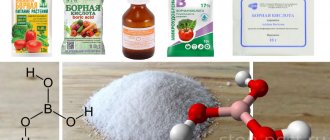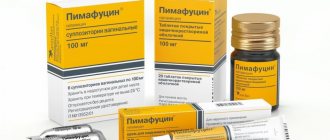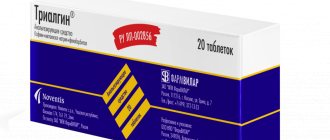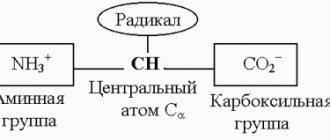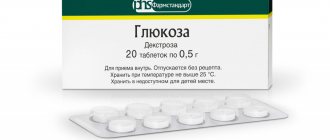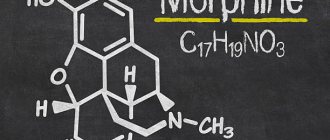The use of boric acid by gardeners
The low price of the product and its effectiveness against many pathogens have increased the popularity of boric acid among gardeners and gardeners. In addition, the content of boron molecules has a beneficial effect on ovaries and fruit formation.
During the flowering period of vegetable and berry crops, dilute 2 g of powder in a bucket of water. The resulting solution is sprayed on plants during the flowering period. Tomatoes especially need such spraying. This procedure provides resistance to fungus and does not allow the buds to fall off without forming fruit.
In addition, this concentration of boric acid frees plants from aphids and other pests that interfere with the full development of leaves. The main enemy of densely planted beds is the slobber. This is an insect that binds leaf embryos with its secretion, in which eggs will be laid. The pest is capable of destroying the crop, preventing the green part of the plant from gaining strength and forming buds.
Gardeners recommend spraying apple trees and other fruit plants with boric acid to protect them from aphids, midges and caterpillars. This budget method has already shown its high efficiency, which is why boric acid powder often disappears from pharmacies in late April and early May. To avoid problems with purchasing powder, experienced gardeners recommend preparing for the summer season in advance and buying boric acid in February. Then the price of the powder may be even lower.
How to use boric acid
Boric acid is used for seed treatment and plant nutrition. To speed up seed germination, boric acid is diluted in a proportion of 2 g per 10 liters of water, the seeds are placed in a fabric bag and immersed in the solution for a day.
Seeds of zucchini, cucumbers and cabbage are soaked in boron solution for 12 hours.
Depending on the extent to which a particular crop needs boron, plants are divided into 3 groups:
- Small degree : herbs, legumes, strawberries, potatoes (we’ll talk about the last two crops separately).
- Medium degree : most green and vegetable crops, stone fruit trees, berry bushes.
- High degree : cabbage, pome trees, beets.
Plants of the first group , as a rule, are fed only in case of boron starvation (pre-sowing application of fertilizer to the soil is also appropriate).
Potatoes and garden strawberries (strawberries) are among the group of plants that have little need for boron, and yet a lack of the microelement can significantly affect the development of these crops. At the slightest sign of boron starvation in potatoes, watering the plants with boric acid will help (5 g of fertilizer per 10 liters of water, this amount of solution is enough to treat 10 sq.m.). Read about strawberries below.
For crops of the second group, foliar fertilizing with boric acid (2 g per 10 liters of water) twice per season is suitable: the first time - at the stage of coloring the buds and then two weeks later (the stage of ovary formation).
The third group of plants needs boron fertilizing more than others. In areas with fertile soil, crops are traditionally sprayed with a 0.01% solution, in areas with less fertile soil - 0.02%. For poor soils, the concentration should be increased to 0.05-0.1% (5-10 g of boric acid per 10 liters of water, consumption - 1 liter per 1 sq.m). The application schedule for most crops is the same as for the second group.
Pome fruits are treated with boric acid three times: at the beginning of budding, after the flowers fall and when the fruits begin to fill.
Use in medicine
Medicine began to use boric acid immediately after its antiseptic properties became known. Back in the 19th century, healers prepared solutions from it to treat wounds. A distinctive feature of boric acid, in comparison with other antiseptic solutions, is its gentle action - it does not cause irritation, does not sting or burn. If the product accidentally gets into open areas of the wound, pain does not occur.
Otolaryngologists prescribe boric acid in the form of drops for instillation in the ears. First of all, this remedy effectively fights otitis externa if it was caused by a pathogen whose life activity began in the passage to the eardrum.
Dermatologists use boric acid as a remedy to relieve itching and prevent flaking in eczema. Psoriasis, being an incurable genetic disease, can be much easier if the formations on the body are treated with a solution of boric acid. The effect is due to the disinfection of wounds, between the scales of which fungi often begin to multiply. By excluding the addition of superinfection, it is possible to achieve minimal severity of neoplasms on the body. The wounds will not itch, bleed or become inflamed.
Acne is another indication for the use of boric acid solution. Any rash with purulent contents is the result of bacterial activity. Most often it is staphylococcus. Boric acid, as an antiseptic, stops the proliferation of bacteria and cleanses the skin of acne. Daily use of the solution can relieve skin problems in a week, and in severe cases in 10 days.
Boric acid can be found in many ointments for problematic facial skin. It is successfully combined with zinc, which enhances the antiseptic effect and dries out the skin. This combination copes well with diaper rash and weeping dermatitis.
If there is severe sweating on the feet, it is recommended to dilute a tablespoon of boric acid powder in 5 liters of warm water to prepare foot baths. Daily use of the product reduces sweating, eliminates unpleasant odors and prevents the risk of developing fungal infections between the fingers and on the nail plate.
Boric acid: 4 ways to use it in the garden
1 Stimulation of seed germination.
Boric acid solution: 0.2 g of boric acid per 1 liter of water. Seeds of carrots, tomatoes, onions, and beets are soaked for 1 day; cabbage, cucumbers, zucchini - for 12 hours. When sowing a large number of seeds, it is better to dust them with a powdered mixture of boric acid and talc.
How can you treat seeds before sowing?
2 Preparing the soil for sowing and planting.
Boric acid solution: 0.2 g of boric acid per 1 liter of water. Before sowing or planting seedlings, water the planting beds with a solution, consumption 10 liters per 10 m2, loosen and only then sow the seeds. This method is used as a preventive measure when a boron deficiency is suspected in soils.
How to sow seeds for seedlings without soil - in a roll.
3 Foliar feeding.
Boric acid solution: 0.1 g of boric acid per 1 liter of water. The first spraying is carried out in the budding phase, the second - in the flowering phase, the third - during the fruiting period of the plants. When added together with other microelements, the concentration of boric acid is reduced to 0.05–0.06% (5–6 g of the drug is diluted in 10 liters of water).
You can find out how to spray cucumbers with boric acid to strengthen the ovaries in this material >>>.
4 Root feeding.
Boric acid solution: 0.1–0.2 g boric acid per 1 liter of water. It is used only in cases of severe starvation or a clearly known lack of boron in the soil. Plants are pre-watered with plain water to avoid chemical burns to the roots. Usually used on seedlings of flowering plants growing on soddy-podzolic soils or in a mixture of peat and sand.
Boric acid dissolves easily only in hot water! Always first dilute the sample (bag) in 1 liter of hot water, then bring it to the required volume with water at room temperature. Carry out foliar feeding (spraying) in cloudy weather, or better in the evening, to avoid sunburn. On hot, dry days, water the plants well beforehand.
special instructions
When boric acid is applied to open wounds, the chemical compounds are absorbed into the bloodstream. Long-term use of boric acid can lead to its accumulation in organs and tissues. It takes a long time for the substance to be removed from the body. Only half of the absorbed volume is excreted in the urine after 12 hours. The remaining amount will still be present in the body for a week.
If the accumulation of a substance in the body has reached dangerous levels, a person begins to experience symptoms of intoxication, including headache, vomiting, nausea, and confusion. And if taken orally, it can be fatal.
To avoid intoxication, it is necessary to avoid treating large area wounds, not to use the solution for longer than the specified period of time, and not to violate the proportions when preparing the product.
Boric acid for ants
Boric acid is not only a useful fertilizer, but also an effective insecticide: it will help cope with ants on the site. Boron, entering the digestive tract of the insect, fills the stomach and disrupts the water balance. The effect of the drug manifests itself gradually as it accumulates. Usually the death of ants occurs 10-12 days after consuming the bait. We would like to offer you several recipes for baits with boric acid:
- Grind 0.5 tsp. boric acid and 2 egg yolks. Roll the mixture into small balls and place along the ant trails.
- Grind 3 boiled potatoes (in their jackets) with 3 egg yolks. Add 1 tsp. sugar and 10 g of boric acid, mix. Roll balls and place them in ant habitats.
- Mix 2 tbsp. glycerin and 1 tbsp. water, add 1.5 tbsp. sugar or 1 tsp. honey, 1/3 tsp. boric acid. Form into balls.
As you can see, the benefits of boric acid for the garden are simply enormous, and this product costs a penny. And if this powder is not yet among your supplies, we think it’s time to fix it.
Description and characteristics of boric acid
Boron is one of those microelements, the deficiency of which can negatively affect the yield and general condition of plants. This substance can improve metabolic processes in tissues, normalize the synthesis of nitrogenous substances necessary for the growth of green mass, and also promote photosynthesis.
Figure 1. Boron has a beneficial effect on the condition of garden crops
The modern market offers a fairly wide selection of boron-based mineral fertilizers, but ordinary boric acid is still considered the most affordable and effective (Figure 1). This product is used both in the garden and in the vegetable garden, since it can be used both as an independent fertilizer and as a component of complex fertilizers.
In appearance, boric acid is a white, odorless, crystalline substance. It easily dissolves in water, which allows you to quickly prepare a working solution for feeding plants in the country.
Signs of boron deficiency in plants
Experienced gardeners recommend fertilizing with boric acid only if plants are deficient in this microelement. This is explained by the fact that natural boric acid is still found in small quantities in the soil, and its excess can also negatively affect the condition of plants (Figure 6).
You can determine that plants lack boron by the following signs:
- The leaves of pear and apple trees become thicker and deformed. Gradually they begin to turn yellow and die.
- Microelement deficiency in grapes is manifested by the formation of spots on the leaves between the veins. Gradually they spread to the entire leaf blade and cause its death.
- In tomatoes, boron deficiency is manifested by the death of the tips of the shoots, and new, very fragile shoots appear near the roots.
- In beets, microelement deficiency is accompanied by the development of phimosis, which is manifested by the formation of dry spots on the leaves. If fertilizing is not applied in time, the disease will spread to the root crop itself, causing it to rot from the inside.
Figure 6. Signs of boron deficiency
Quite often, potatoes also suffer from boron deficiency. If there is a deficiency of this microelement, the crop becomes more susceptible to scab, and the bushes themselves are greatly retarded in development.
Flowers can also suffer from boron deficiency. In this case, they begin to lay buds that are too small, even if in nature the variety is considered large-flowered. Perennial varieties begin to gradually wither, and annuals fade ahead of schedule.
Instructions for use for plants
General instructions for using boric acid for feeding garden crops include only a few nuances. Firstly, the substance needs to be diluted only in a small amount of hot water so that the crystals can dissolve in it. Next, the finished solution is brought to the required volume by adding water at room temperature.
Secondly, there are contraindications to the use of the solution. It can only be used foliarly, since any other treatment method can cause burns to the leaves or roots. In addition, it is advisable to carry out the procedure in the evening or on a cloudy day, and only if the plants begin to show signs of microelement deficiency.
Since the correct use of boric acid requires proper selection of dosage and adherence to certain processing rules, we will consider these nuances in more detail.
Selection of dosage
The proportions for preparing the working solution differ depending on the type of crops being processed and their need for microelements. For example, apple and pear trees suffer most from boron deficiency. To spray them, prepare a solution of high concentration: 10 grams of the substance per 10 liters of water.
Tomatoes, carrots and greens require a lower dosage of the drug. To feed them, it will be enough to dissolve 2 grams of the drug in a bucket of water. Potatoes, strawberries and wild strawberries consume the least boron, so to feed them, use a solution of the lowest concentration - no more than a gram of the substance per 10 liters of water.
Consequences of overdose
Many novice gardeners are interested in whether boric acid is harmful to humans. It should be clarified right away that if the recommended dosages are observed, it is not capable of causing harm to humans. However, an excess of the substance can cause significant harm to boric acid for the plants themselves.
An excess of the substance is expressed quite clearly: the leaves become glossy, take on a dome-shaped shape, and their edges bend downwards, and these manifestations first appear on old leaves and then gradually move on to young ones.
Preparation of the solution
Despite the fact that preparing a solution of boric acid is not difficult, this process has its own characteristics. In order for the product to be truly effective, you need to follow certain rules for its preparation (Figure 7).
Note: Please note that diluting boric acid powder in cold water or liquid at room temperature will not work. It must be hot. Only in this case will the crystals completely dissolve in the liquid.
Figure 7. In liquid form, the fertilizer is absorbed better
To ensure that there is no sediment in the finished working solution, a mother solution is first prepared. To do this, the powder is poured into a bag made of thick fabric (not synthetic or wool), and then suspended in a liter of hot water heated to 70-80 degrees. When the solution is ready, it is brought to the required volume with water at room temperature.
Tilling the soil before planting
The need for boron is determined not only by the type of crop and compliance with the rules of agricultural technology, but also by the level of soil fertility. Therefore, in some cases, it is advisable to treat the soil with an aqueous solution of boric acid even before sowing seeds or planting seedlings for seedlings.
Black soil requires the least amount of boron, but only if the soil is properly fertilized and crop rotation is observed. Sandy loam, loamy and brown forest soils contain less boron, so if you observe a deficiency, it is better to carry out additional soil treatment. The least trace element is found in gray forest, sod-podzolic, peat and heavy loamy soils. It is recommended to treat such areas with boron solution in early spring, even before planting.
What plants is it used for?
It is not for nothing that boric acid is called a universal plant fertilizer, as it is suitable for all types of crops. In general, sooner or later, microelement deficiency can appear in any plant, although preventive treatment is not recommended. The substance is added to the soil only after signs of microelement deficiency appear.
Using the drug in the correct dosage will help protect cucumbers, root vegetables and fruit and berry crops in open ground from diseases, and will also increase the yield and quality of fruits. Despite the fact that apple and pear trees require the most boron, the substance is also often used to process strawberries, raspberries and grapes, but only if there are signs of deficiency of the element.
Rules for feeding plants
Since boron crystals can settle on the above-ground parts of plants and can cause burns, fertilizing is carried out only by foliar feeding and only in the evening. This way you will be sure that the drug is absorbed into the tissue and will have the desired effect.
In addition, there are certain differences in the timing of fertilizing. If garden and garden crops are fertilized mainly in the middle of the growing season, when the ovaries begin to form, then it is better to feed flower crops at the budding stage. For example, feeding roses with boric acid in August will help the crop better prepare for winter, especially if the procedure was carried out in compatibility with calcium nitrate or other mineral fertilizers.
How to spray correctly
Compliance with a certain spraying technology also plays an important role. The working solution should be applied only to the above-ground parts of plants using a foliar method, and the liquid should have the appropriate concentration. It is not recommended to water vegetable and garden crops at the roots, as this can cause severe burns (Figure 8).
Figure 8. It is better to apply fertilizer by foliar application
Spraying is carried out in cloudy weather or in the evening so that boron ions also do not cause leaf burns. At the same time, it is important to strictly observe the timing of the procedure: it is carried out only during the formation of the ovaries, since treatment during fruiting will not give the desired result.
Side effects
Side effects from the use of boric acid can only occur if the gardener did not follow the recommended dosage or did not carry out the treatment correctly.
In order not to harm the plants, you need to carefully study the instructions and prepare the solution only in a concentration suitable for a particular crop, even if you use boron in combination with other drugs.
Properties
Boric acid exhibits very weak acidic properties. It is relatively slightly soluble in water. Its acidic properties are due not to the abstraction of the H+ proton, but to the addition of a hydroxyl anion:
Ka = 5.8·10−10 mol/l; pKa = 9.24.
It is easily displaced from solutions of its salts by most other acids. Its salts, called borates, are usually produced from various polyboric acids, most often tetraboric acid H2B4O7, which is a much stronger acid than orthoboric acid. B(OH)3 shows very weak signs of amphotericity, forming low-stable boron hydrogen sulfate B(HSO4)3.
When orthoboric acid is neutralized with alkalis in aqueous solutions, orthoborates containing the (BO3)3− ion are not formed, since orthoborates are hydrolyzed almost completely due to the too low formation constant [B(OH)4]−. Tetraborates, metaborates or salts of other polyboric acids are formed in solution:
With an excess of alkali they can be converted into metaborates:
Meta- and tetraborates are hydrolyzed, but to a lesser extent (reactions opposite to those given).
In acidified aqueous solutions of borates, the following equilibria are established:
The most common salt of boric acid is sodium tetraborate decahydrate Na2B4O7 10H2O (technical name borax).
When heated, boric acid dissolves metal oxides, forming salts.
With alcohols in the presence of concentrated sulfuric acid it forms esters:
The formation of boron methyl ether B(OCH3)3 is a qualitative reaction to H3BO3 and boric acid salts; when ignited, boron methyl ether burns with a beautiful bright green flame.
Indications
Boric acid has pronounced antiseptic activity. When applied topically in the form of liniment, paste or ointment, it has anti-pediculosis, keratolytic, disinfectant, drying and deodorizing effects.
Thanks to these properties, boric acid preparations in the form of pastes and ointments are used for:
- Pediculosis;
- Neuralgia and myositis (boron-zinc-naphthalan paste);
- Sweating (Teymurov paste).
Solidol ointment is used for psoriasis.
The use of boric acid in the form of aqueous solutions is indicated for conjunctivitis (2% solution), inflammatory lesions of the skin (dermatitis) and weeping eczema (3% solution).
Alcohol solutions are used for diaper rash, as well as acute and chronic inflammatory diseases of the ears, purulent lesions of the skin caused by the introduction of pyogenic cocci into it.
A 10% solution of boric acid in glycerin is prescribed for colpitis, pyoderma and diaper rash.
For patients who have undergone surgery on the middle ear, in some cases the use of Boric acid by insufflation (injection) of powder into the ear cavity is indicated.
Excerpt characterizing Boric acid
- No, why regret it? Having been here, it was impossible not to pay respects. Well, if he doesn’t want to, that’s his business,” said Marya Dmitrievna, looking for something in her reticule. - Yes, and the dowry is ready, what else do you have to wait for? and what’s not ready, I’ll send it to you. Although I feel sorry for you, it’s better to go with God. “Having found what she was looking for in the reticule, she handed it to Natasha. It was a letter from Princess Marya. - He writes to you. How she suffers, poor thing! She is afraid that you will think that she does not love you. “Yes, she doesn’t love me,” said Natasha. “Nonsense, don’t talk,” Marya Dmitrievna shouted. - I won’t trust anyone; “I know that he doesn’t love me,” Natasha said boldly, taking the letter, and her face expressed dry and angry determination, which made Marya Dmitrievna look at her more closely and frown. “Don’t answer like that, mother,” she said. – What I say is true. Write an answer. Natasha did not answer and went to her room to read Princess Marya’s letter. Princess Marya wrote that she was in despair over the misunderstanding that had occurred between them. Whatever her father’s feelings, Princess Marya wrote, she asked Natasha to believe that she could not help but love her as the one chosen by her brother, for whose happiness she was ready to sacrifice everything. “However,” she wrote, “don’t think that my father was ill-disposed towards you. He is a sick and old man who needs to be excused; but he is kind, generous and will love the one who will make his son happy.” Princess Marya further asked that Natasha set a time when she could see her again. After reading the letter, Natasha sat down at the desk to write a response: “Chere princesse,” [Dear princess], she wrote quickly, mechanically and stopped. “What could she write next after everything that happened yesterday? Yes, yes, all this happened, and now everything is different,” she thought, sitting over the letter she had begun. “Should I refuse him? Is it really necessary? This is terrible!”... And in order not to think these terrible thoughts, she went to Sonya and together with her began to sort out the patterns. After dinner, Natasha went to her room and again took Princess Marya’s letter. - “Is it really all over? she thought. Did all this really happen so quickly and destroy everything that was before”! She recalled with all her former strength her love for Prince Andrei and at the same time felt that she loved Kuragin. She vividly imagined herself as the wife of Prince Andrei, imagined the picture of happiness with him repeated so many times in her imagination, and at the same time, flushed with excitement, imagined all the details of her yesterday's meeting with Anatole. “Why couldn’t it be together? sometimes, in complete eclipse, she thought. Then only I would be completely happy, but now I have to choose and without either of both I cannot be happy. One thing, she thought, to say what was meant to Prince Andrei or to hide it is equally impossible. And nothing is spoiled with this. But is it really possible to part forever with this happiness of Prince Andrei’s love, which I lived for so long?” “Young lady,” the girl said in a whisper with a mysterious look, entering the room. – One person told me to tell it. The girl handed over the letter. “Only for Christ’s sake,” the girl was still saying when Natasha, without thinking, broke the seal with a mechanical movement and read Anatole’s love letter, of which she, without understanding a word, understood only one thing - that this letter was from him, from that man, whom she loves. “Yes, she loves, otherwise how could what happened happen? Could there be a love letter from him in her hand?” With shaking hands, Natasha held this passionate, love letter, composed for Anatoly by Dolokhov, and, reading it, found in it echoes of everything that it seemed to her that she herself felt. “Since last night, my fate has been decided: to be loved by you or to die. I have no other choice,” the letter began. Then he wrote that he knew that her relatives would not give her to him, Anatoly, that there were secret reasons for this that he alone could reveal to her, but that if she loved him, then she should say this word yes, and no human forces will not interfere with their bliss. Love will conquer everything. He will kidnap and take her to the ends of the world. “Yes, yes, I love him!” thought Natasha, re-reading the letter for the twentieth time and looking for some special deep meaning in every word. That evening Marya Dmitrievna went to the Arkharovs and invited the young ladies to go with her. Natasha stayed at home under the pretext of a headache. Returning late in the evening, Sonya entered Natasha's room and, to her surprise, found her not undressed, sleeping on the sofa. On the table next to her lay an open letter from Anatole. Sonya took the letter and began to read it. She read and looked at the sleeping Natasha, looking on her face for an explanation of what she was reading, but did not find it. The face was quiet, meek and happy. Clutching her chest so as not to suffocate, Sonya, pale and trembling with fear and excitement, sat down on a chair and burst into tears. “How did I not see anything? How could it have gone this far? Has she really stopped loving Prince Andrei? And how could she let Kuragin do this? He is a deceiver and a villain, that much is clear. What will happen to Nicolas, sweet, noble Nicolas, when he finds out about this? So this is what her excited, determined and unnatural face meant the third day, both yesterday and today, thought Sonya; but it cannot be that she loves him! Probably, not knowing from whom, she opened this letter. She's probably offended. She can't do this! Sonya wiped away her tears and walked up to Natasha, again peering into her face. - Natasha! – she said barely audible. Natasha woke up and saw Sonya. - Oh, she’s back? And with the determination and tenderness that happens in moments of awakening, she hugged her friend, but noticing the embarrassment on Sonya’s face, Natasha’s face expressed embarrassment and suspicion. - Sonya, have you read the letter? - she said. “Yes,” Sonya said quietly. Natasha smiled enthusiastically. - No, Sonya, I can’t do it anymore! - she said. “I can’t hide it from you anymore.” You know, we love each other!... Sonya, my dear, he writes... Sonya... Sonya, as if not believing her ears, looked at Natasha with all her eyes. - And Bolkonsky? - she said. - Oh, Sonya, oh, if only you could know how happy I am! - Natasha said. – You don’t know what love is... – But, Natasha, is it really all over? Natasha looked at Sonya with big, open eyes, as if not understanding her question. - Well, are you refusing Prince Andrei? - said Sonya. “Oh, you don’t understand anything, don’t talk nonsense, just listen,” Natasha said with instant annoyance. “No, I can’t believe it,” Sonya repeated. - I don't understand. How did you love one person for a whole year and suddenly... After all, you only saw him three times. Natasha, I don’t believe you, you’re being naughty. In three days, forget everything and so... “Three days,” said Natasha. “It seems to me that I have loved him for a hundred years.” It seems to me that I have never loved anyone before him. You can't understand this. Sonya, wait, sit here. – Natasha hugged and kissed her.
Application
- In nuclear reactors as a neutron absorber dissolved in the coolant.
- Boron fertilizer.
- In laboratories it is used to prepare buffer solutions.
- In medicine - as a stand-alone disinfectant for adults
, and also in the form of a 2% solution - for washing the skin after exposure to alkalis. - Also, various combination preparations are produced based on boric acid (ATC group [www.whocc.no/atc_ddd_index/?code=D08AD D08AD]), for example Teymurov’s paste.
- In photography - as part of fine-grained developers and acidic fixers to create a weak acidic environment.
- It is registered in the food industry as food additive E284 (in Russia this additive is not included
in the list of approved products [2]). - In jewelry - as the basis of fluxes for soldering gold-containing alloys.
- In foundries - a binder for acid lining of furnaces, a component for protecting the jet from oxidation when casting magnesium alloys.
- In everyday life - extermination of cockroaches and ants.
- In the production of ceramics, fiber optics, fiberglass, glass[3],
- As a fire retardant to protect wood,
- Contains electrolytes for copper and nickel plating.
Directions for use and dosage
According to the instructions for boric acid, adult patients with inflammation of the outer eye membrane are advised to rinse the conjunctival sac (the cavity between the front surface of the eyelids and the back surface of the eyeball) with a 2% aqueous solution.
To treat ear inflammation, a gauze swab (turunda) is moistened in an alcohol solution, after which it is inserted into the ear canal. In some cases, instillation of 3-5 drops into the ear canal with a frequency of procedures of 2 or 3 times a day may be indicated.
For diaper rash, eczema or pyoderma, treatment is indicated using lotions with a 3% alcohol solution on the affected areas of the body.
For neuralgia and inflammatory lesions of muscle tissue in places where painful sensations are localized, it is recommended to apply boron-zinc-naphthalan paste.
For inflammatory processes in the vagina, treatment with boroglycerin is performed.
As an anti-pediculosis agent, boric acid is used in the form of an ointment. Apply it to the scalp in an amount of 10-25 grams (which depends on the thickness and length of the hair, as well as the degree of infection), leave for 20-30 minutes, then rinse thoroughly, wash the hair with soap or shampoo and rinse it under running water.
Patients with psoriasis are advised to rub grease ointment into the affected areas (in the direction of hair growth). To enhance the effect, the area of the elbows and shins after treatment can be covered with wax paper and secured with a band-aid. During therapy, it is recommended to bathe more than once every 2-3 days. If folliculitis (purulent-inflammatory processes affecting the hair follicle) appears, it is recommended to take a break from treatment for 7-10 days. During a break, you should take baths with soap.
Signs of boron deficiency on plants and main feedings
With a lack of boron, the roots are inhibited and sometimes rot, the plant’s conducting system develops poorly, the supply of nutrients is difficult, and the plant lags behind in development. Lack of boron stimulates the development of diseases - dry rot, brown rot, hollowness, bacteriosis. With boron deficiency, the growth point may die, and plant pollen is sometimes unable to germinate. The lack of boron is especially noticeable in dry years. And the amateur gardener, often complaining about the meager harvest, does not understand that the reason is a lack of boron. Apple trees especially require a lot of boron.
Boron deficiency may be manifested by changes in leaf color
Boric acid for strawberries
Signs of boron deficiency in garden strawberries: curvature of leaves and necrosis of the edges. Fertilizing with boric acid significantly increases the yield and improves the taste of the berries. In early spring, plantings are watered with a solution of boric acid with the addition of potassium permanganate (1 g potassium permanganate, 1 g boric acid per 10 liters of water), consumption - approximately 10 liters per 30-40 bushes. It is useful to carry out foliar feeding with a solution of boric acid (5 g per 10 liters of water).
Application of boric acid significantly increases strawberry yield
Before flowering, when the plants have put out their buds, apply foliar feeding with a solution (2 g of boric acid, 2 g of manganese, 1 cup of sifted ash per 10 liters of water). Make an extract from the ash in advance: pour a glass of ash with a liter of boiling water and leave, stirring occasionally, for a day, then filter through cheesecloth - and the infusion is ready.
How to get a good harvest of strawberries (garden strawberries).
Boric acid for apple and pear trees
Signs of boron deficiency in apple and pear trees: leaves thicken, warp, suberization and darkening of the veins occurs; during acute starvation, the leaves fall off. Rosette leaves are observed - small leaves at the ends of the shoots are collected in the form of a rosette. In advanced cases, the tree tops die off.
In pear, rosette leaves are characterized by rapid drying of flowers and deformation of fruits, on the surface of which pits and areas of damaged tissue appear.
Boron deficiency may cause apples to become suberized
For apple trees, boron deficiency results in a disease called internal apple suberization. Light spots about 1 cm in diameter appear in the pulp; later they turn brown and become like a cork or sponge. Dry spotting and crusty spots affect the surface of the fruit, which becomes swollen and deformed.
Foliar feeding (10–20 g of boric acid per 10 liters of water) sharply increases fruit formation. It is held in the evening, before sunset. Spray evenly the entire accessible crown. The first time is at the beginning of the buds, the second time is after 5–7 days. This treatment sharply reduces the number of fallen ovaries, which gives an increase in yield by 25–30%. The resistance of trees to unfavorable conditions and the shelf life of fruits increase.
Boric acid for grapes
Signs of boron deficiency in grapes: the appearance of chlorotic spots between the veins of the leaf blades, which gradually grow, the absence of normal ovaries on the grapes (peas). A new seedling dies within a year or 1–2 years after planting in a permanent place.
Even a single treatment during the budding period increases the yield by more than 20% due to the preservation of flowers and less shedding of ovaries. Many people wonder why grapes have small berries. This phenomenon is called peas. The appearance of high-quality, fertile flowers helps to avoid the problem of grape peas.
Pea-peeling of grapes is one of the symptoms of boron deficiency
Taking into account the characteristics of the grapes, add zinc salts to boric acid (10 liters of water, 5 g of boric acid, 5 g of zinc sulfate).
See what methods will help you avoid peas in grapes.
Boric acid for tomatoes
Signs of boron deficiency in tomatoes: blackening and death of the growth point of the stem, rapid growth of new shoots from the root, while the petioles of young leaves become very brittle. Brown spots of dead tissue form on the fruits, usually in the tip area.
If there is a lack of boron, tomatoes cannot set fruit.
As a preventive measure, soaking seeds in a solution of boric acid (0.2 g of the drug per 1 liter of water) for a day, or in a solution of microfertilizers containing boron, helps well.
Before planting seedlings, add boric acid or boron-containing fertilizers to the soil (not necessary on cultivated soils). Do not forget about foliar feeding before flowering (10 g of boric acid per 10 liters of water).
You can use foliar feeding of the same concentration in the green fruit phase to accelerate the ripening and accumulation of sugars in the fruits.
Look for other signs of micronutrient deficiency in tomatoes so you can feed your plants correctly.
Boric acid for potatoes
Signs of boron deficiency in potatoes: fungal scab disease, general developmental delay. The growth point is inhibited, which is accompanied by yellowing of the leaves, the petioles turn red and become brittle. The need for boron in potatoes depends on the acidity of the soil, as well as on the ratio of mineral elements in the soil and temperature. If the fertilizer application rates for potassium and nitrogen have been exceeded, the need for boron increases, and with an increase in the dose of phosphorus fertilizer, it decreases.
Adding boron can stop the development of scab on potatoes
When the first symptoms of scab disease appear, fertilizing will help (6 g of boric acid per 10 liters of water), consumption: per 10 m2 of potato planting. If there is no boric acid, to treat the same area, dilute 9 g of borax in 10 liters of water.
Also, to prevent scab, spray the tubers at the stage of appearance of the first sprouts with a 1–1.5% solution of boric acid (10–15 g of boric acid per 10 liters of water), consumption: approximately 50 ml per 1 kg of tubers. It is very convenient to process potatoes laid out in boxes.
When applied to the soil, boron-phosphorus fertilizers are used; in their absence, ash can be used. 1 kg of ash contains from 200 to 700 mg of boron.
How to properly use wood ash to feed plants.
Boric acid for beets
Signs of boron deficiency in beets: the heart of the root rots. This is caused by a fungal disease - phomosis. Concentric light brown spots with black dots in the center form on the leaves, then the disease spreads to the root crop and its core rots. The cut tissues at the initial stage have a dark brown, almost black color; later they dry out, become withered and rotten.
To prevent fomoz and other beet diseases, apply complex fertilizers containing boron
Before planting, soak the seeds for 10–12 hours in a 0.1% solution of boric acid.
Apply boron to the soil to prevent fomoz. With properly prepared soil, to obtain healthy and tasty beet roots, it is enough to carry out one foliar feeding at the stage of 4–5 leaves (5 g of boric acid per 10 liters of water).
How to get a good beet harvest.
Boric acid for ornamental plants
Boron helps speed up the absorption of calcium and abundant formation of buds. For foliar feeding, use a 0.1% solution of boric acid (10 g per 10 l). When foliar feeding with boron together with other microfertilizers, the concentration of boric acid is reduced by 2 times (0.5 g per 1 l). The solution is sprayed on plants in the budding and flowering phase.
Roses. Spring spraying with a solution of boric acid in a ratio of 10 g per 10 liters gives very good results. To prevent fungal diseases, rose cuttings are immersed for 2–3 minutes. into a solution of boric acid (20 g per 1 liter of water).
Rose Chippendale
Look for other signs of micronutrient deficiency in roses.
Gladioli . A solution of boric acid (2 g per 10 liters of water) is used to feed gladioli in the phase of 3–4 leaves and during the flowering period to obtain larger corms.
Dahlias. Spraying with boric acid mixed with potassium permanganate (5 g + 2 g per 10 liters of water) has a beneficial effect on the development of flowering plants. Fertilizing is done 2-3 times before mass flowering in the evening with an interval of 15-20 days.
Side effects
Side effects:
Acute and chronic intoxication in the form of nausea, vomiting, diarrhea, skin rashes, desquamation of the epithelium, headache, confusion, oliguria and, in rare cases, shock. Overdose: Symptoms of acute poisoning - nausea, vomiting, diarrhea, depression of the circulatory system and central nervous system, decreased body temperature, shock and coma, erythematous rash (possible death within 5-7 days). Symptoms of chronic intoxication (with long-term use) are exhaustion, stomatitis, eczema, local tissue swelling, menstrual irregularities, anemia, convulsions, alopecia. Treatment is symptomatic. Blood transfusions, hemo- and peritoneal dialysis are useful.
